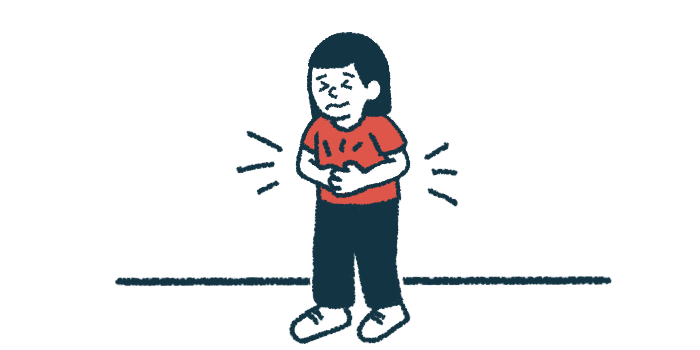PWS places severe strain on caregivers and families: Study
Systematic review points to shorter life expectancy, higher costs

Prader-Willi syndrome (PWS) is associated with shorter life expectancy, impaired quality of life, and high healthcare and caregiving costs — all of which place a heavy burden on families and the healthcare system.
That’s according to a systematic review of more than 130 published studies. Data also found that excessive hunger (hyperphagia) — the hallmark symptom of PWS — is a major driver of poor health outcomes and reduced quality of life for patients, while creating significant emotional, social, and financial strain for caregivers.
“Our findings demonstrate the clear unmet need patients and caregivers experience for comprehensive support and innovative treatment options that directly manage the symptoms of PWS, particularly hyperphagia,” the researchers wrote.
The study, “The burden of illness in Prader-Willi syndrome: a systematic literature review,” was published in the Orphanet Journal of Rare Diseases by a team led by researchers in the U.S. and the U.K. It was funded by Soleno Therapeutics, which markets Vykat XR (diazoxide choline) — the only approved therapy for PWS-related hyperphagia.
Understanding the complex symptoms, risks of Prader-Willi syndrome
PWS is a rare genetic condition marked by a wide range of symptoms, including hyperphagia, behavioral and cognitive difficulties, mental health challenges, and hormonal and sleep disturbances. Because of hyperphagia, people with PWS are at higher risk for obesity and related complications such as diabetes and heart disease.
The researchers sought to comprehensively assess PWS’s burden on patients, caregivers, and healthcare systems. With this in mind, they systematically reviewed studies published up to August 2024 that reported on the burden of PWS. In total, they analyzed 95 studies on how the condition impacts patients and caregivers, 33 on its economic burden, and 11 on mortality.
Findings from the U.S., Europe, and Australia showed that people with PWS face a much higher risk of death than the general population. A U.S. claims study of nearly 9,000 individuals reported a nearly three times higher risk of death, while Danish data pointed to an 11 times higher risk. Mean ages at death ranged from 23 to 32 years, underscoring shortened life expectancy.
Respiratory failure was the leading cause of death, accounting for 31.4% of cases in the U.S. and 40.4% in France. Accidents, choking, and gastrointestinal crises — often linked to hyperphagia — contributed to about one-third of deaths overall and nearly half among U.S. patients under age 18. Most deaths were described by caregivers as sudden (72%) or unexpected (78%).
Unmet needs and impact of hyperphagia on daily life, mental health
While no studies directly measured how hyperphagia impacts patients’ quality of life, two U.S. caregiver surveys suggested that treating it — alongside obesity — would bring the biggest improvements. Behavioral and psychiatric challenges were also frequently reported.
Available data also showed that many children with PWS required specialized schooling (37.5%-78.8%) and more than half of adults reported no professional activity. Daytime sleepiness and hyperphagia often made learning, forming friendships, and social participation more difficult. Quality-of-life assessments consistently fell below population norms, with lower scores linked to a higher number of psychiatric diagnoses.
The review also highlighted the toll PWS takes on families. Parents and caregivers consistently scored lower on quality-of-life measures than parents of healthy children, and their burden was also greater than that of caregivers for people with other chronic or rare conditions.
Caregiver burden rose as children grew older — especially during adolescence and adulthood — when managing anxiety, challenging behaviors, and worsening hyperphagia became more demanding. Strict food security measures often reshaped family routines and limited social participation.
Between one-quarter and three-quarters of caregivers of PWS patients quit their jobs, while others cut back on their working hours. Most employed caregivers (88%) said they had to adjust their jobs at least once a month, with women nearly twice as likely as men to change jobs (63% vs. 33%).
High medical, caregiving costs add to the burden
The economic toll of PWS was substantial. Annual per-patient costs ranged from about $4,292 in Hungary to more than $73,559 in Germany. In the U.S., direct medical costs were up to 10 times higher than in matched controls, largely due to hospitalizations, outpatient care, and medications. Indirect costs came from caregivers cutting back on work hours, retiring early, or taking frequent sick leave.
Healthcare use was also high. Nearly all newborns with PWS in France and China required hospitalization for feeding and breathing difficulties, while psychiatric admissions affected about 44.7%-48.3% of patients.
A U.S. study reported an average of 1.46 hospital admissions per year. Stays typically lasted about a week but could stretch to months during medical or behavioral crises.
While most children and adolescents (88%-96% in the U.S.) lived with their families, up to 50% of adults lived at residential facilities.
The medical complexity of PWS was also reflected in medication use. A French study found people with the condition took a median of six medications, including hormones, diabetes treatments, and psychotropic drugs.
“These findings underscore the need for comprehensive resources to support both the psychosocial and practical aspects of PWS care,” the team concluded, emphasizing evidence on PWS remains fragmented and largely limited to high-income countries.
“Further research is essential to explore the long-term impacts of PWS and the associated caregiver burden, particularly in underrepresented populations and regions, to inform future interventions and support mechanisms,” the researchers added.






